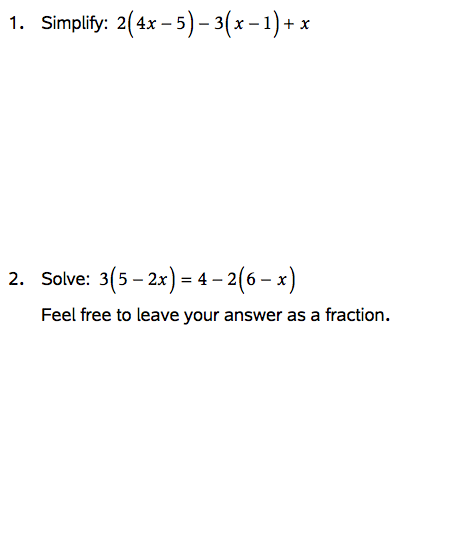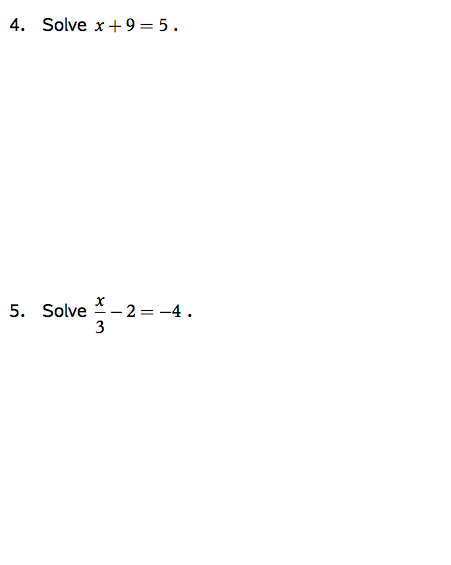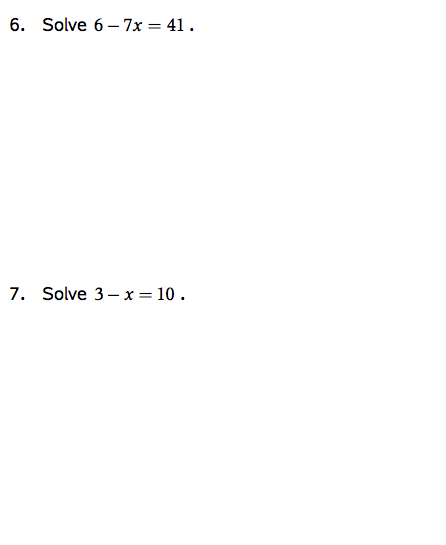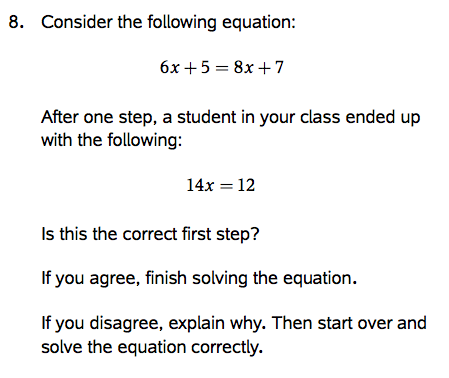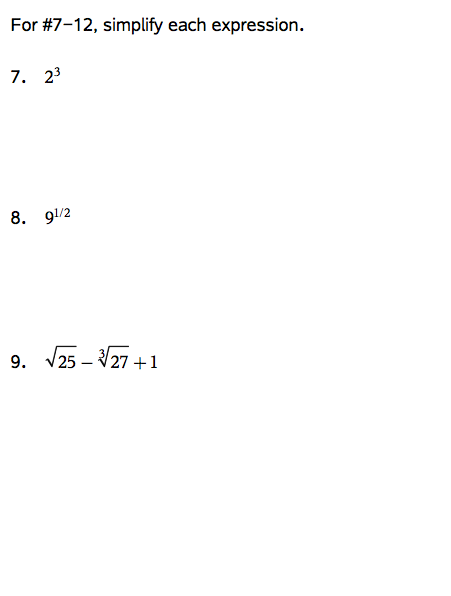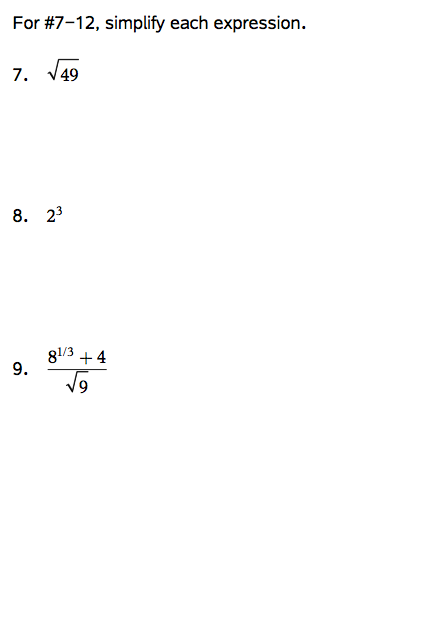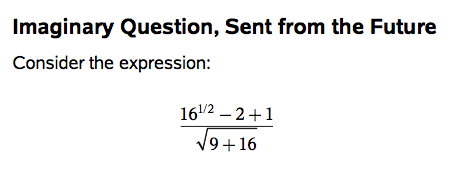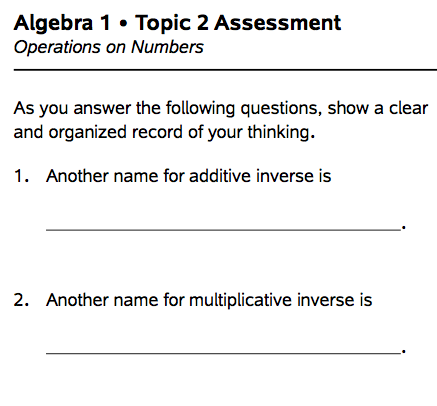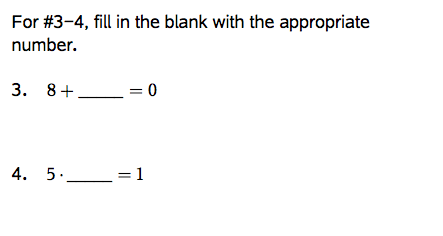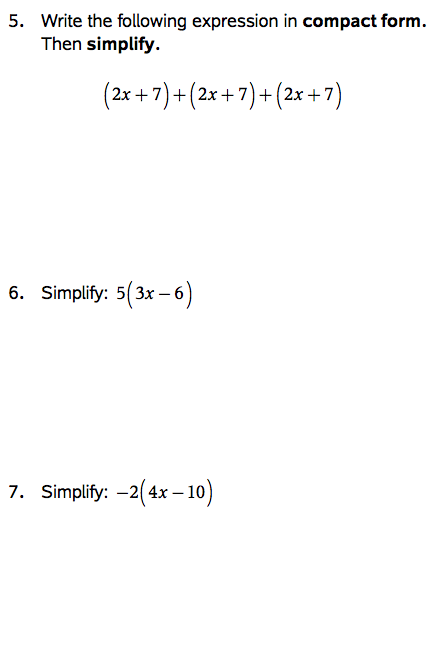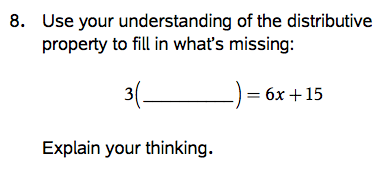Previously…
If you’re just tuning in, consider checking out the first post in the series, or the most recent post.
Algebra 1 • Topic 4 Assessment, Before
We’re drifting into a little section of my Algebra 1 curriculum that I’m at least a little bit ashamed of. I have no one to blame but myself since I put the textbook on the shelf and created lessons, practice, and assessments from scratch. Big plans for improvement in the months ahead, but for now, warts and all…
Here are the two-and-only questions from Form A of my old Topic 4 assessment:
Oh, the shame! I’ll talk more about the gap between this assessment and all-that-is-decent-in-this-world in a moment. For now I’ll just remark that what these questions actually demand of students is so far below what I originally intended that they are essentially useless as an assessment tool in Algebra 1.
Algebra 1 • Topic 4 Assessment, After
The first major flaw in the original assessment is that the questions appear out of nowhere and drift away from our attention just as suddenly. So I replaced these two unrelated questions with a sequence of five questions related to a single scenario. Here are the questions from the new Form A:
My initial intention was for students to use expressions and/or equations to answer the questions on the assessment. On the original version, almost none of my students approached the problems algebraically. Many were able to answer the questions (and many were not), but nearly everyone who answered correctly did so with nothing more than some numerical tinkering.
While I’m not opposed to numerical tinkering (quite the contrary; I think it’s a fantastic practice for students), in this class and on this assessment I was hoping to see whether they could write an expression to model a situation and use the expression to answer another question or two in an efficient manner.
With the original assessment, this was a lost cause. With the updated version (particularly #3-5) I was able to measure at least part of what I set out to measure.
Oh, But It’s Still So… (aka “Wrap Up”)
While my current assessment is an improvement over the first version, it still strikes me as terribly inadequate. Here we are, at the end of a unit on linear modeling, and there’s a massive void when it comes to two hugely important things: (1) At no point is any connection made between the verbal/numerical/algebraic representations and a graphical one (and it would be so easy to fix this!), and (2) The scenario is decidedly boring and contrived.
I have ideas for how to address #1, but am at a loss for how to remedy #2 in the space of a single-page assessment. More to think about for the next round of revisions.
One additional minor/medium flaw I see in the updated version is this: At no point do I ask students to explain their reasoning, justify their thinking, etc. (And word on the street is that those are cool things to do.)
Until next time…







